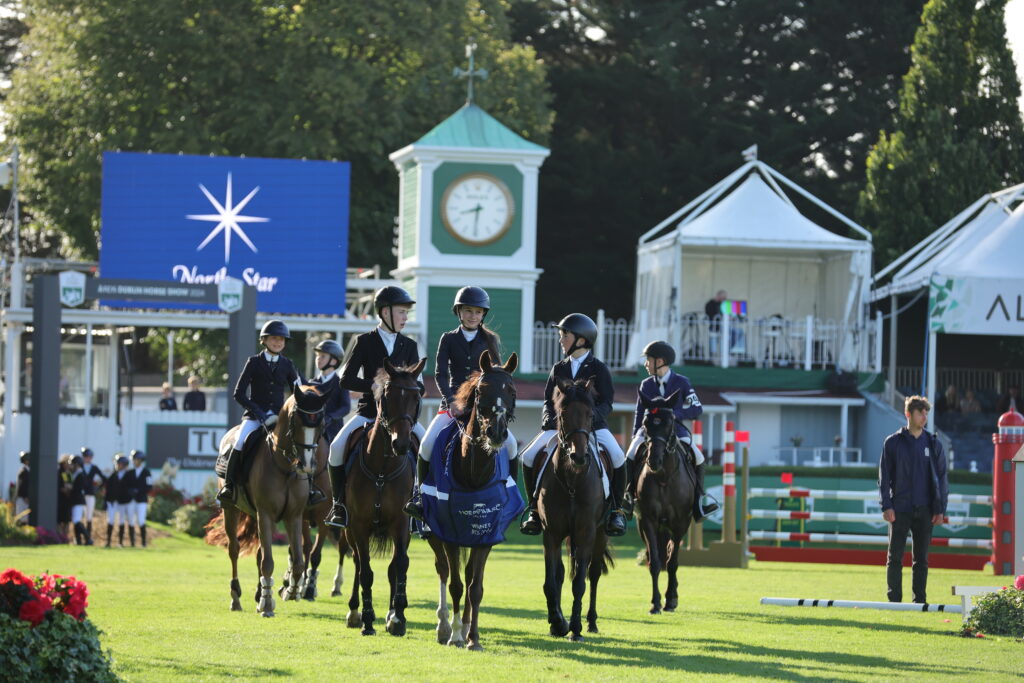As the sun set on the 150th edition of the Dublin Horse Show, the RDS arena fell silent for the first time in five days, a stark contrast to the buzz, the rhythm of hooves, and the drama that had filled it all week. This was no ordinary year; it was a celebration of history, of competition at the highest level, and of the people both in and out of the saddle who make it happen.
In a calendar steeped in tradition, 2025 will be remembered for the way it balanced its storied past with moments of genuine progress particularly in the rise and recognition of women at the sport’s sharpest edge.
⸻
A City Transformed
Few sporting events in the world see 1,500 horses travel into the heart of a capital city, but Dublin is no ordinary show. For one week each summer, the RDS grounds become a living, breathing celebration of equestrian sport, an atmosphere unlike anywhere else. Horses, grooms, riders, and spectators fill the streets, and the city centre seems to pulse in rhythm with the arena action.
This year’s edition carried an extra layer of anticipation, not just for the sport itself but for the future: the redevelopment of the Anglesey Stand, set to be completed for the 2026 show, promises to enhance both the spectator experience and the show’s ability to host world-class competition for years to come.
⸻
Rachel Proudley: Breaking a Six-Decade Barrier

The moment that will be talked about for years came in Saturday’s Defender Puissance. The puissance is one of the sport’s purest tests of courage and technique, demanding precision and nerve as the wall rises to heights that intimidate even the most experienced riders.
When Rachel Proudley, at just 20 years old, cleared 2.15m, she became the first woman in over 60 years to claim the title in Dublin. Her victory was not just a personal triumph but a landmark for women in equestrian sport, and she marked the occasion with a gesture that spoke volumes about her character, announcing she would donate part of her winnings to Temple Street Children’s Hospital.
The puissance has long been dominated by men, often considered a showcase for raw power. Proudley’s win shattered that perception. It was a reminder that in equestrian sport, success is built on courage, partnership, and precision, qualities that transcend gender and, as this year proved, age.
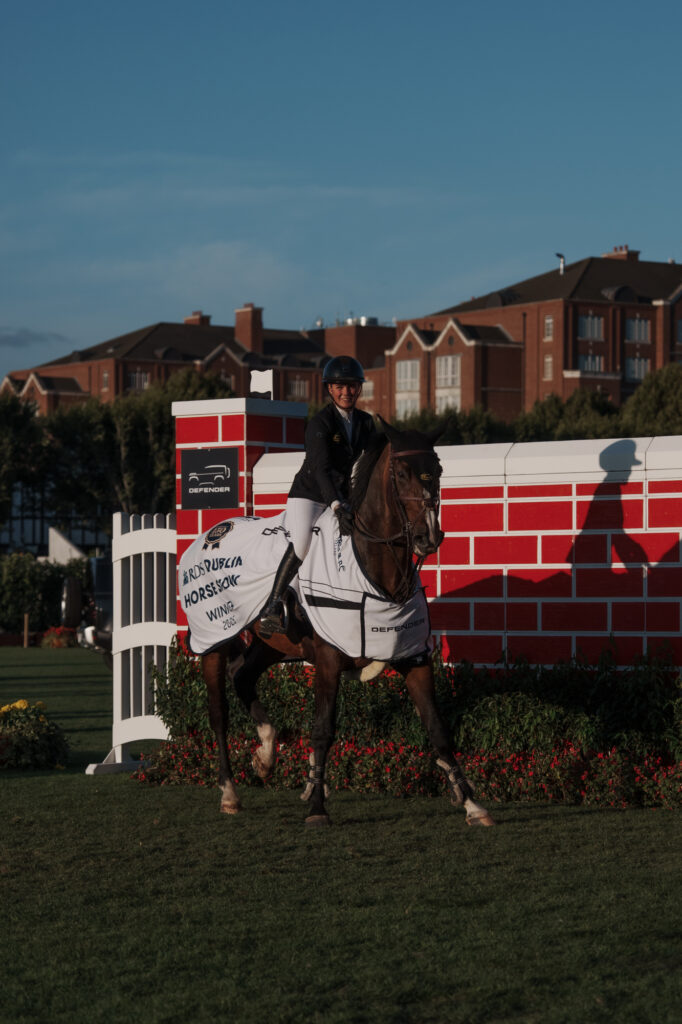
⸻
Laura Kraut: The Lone Clear in a Sea of Faults
On Sunday, the Rolex Grand Prix delivered its own historic moment. Previous winners of this class, including Martin Fuchs aboard Connor Jei, have set the bar for precision under pressure. This year, it was Laura Kraut, 59 years old and one of the sport’s most experienced champions, who rose above the rest, and she did so in commanding style.
In a course designed by Alan Wade, known for his ability to challenge riders without compromising fairness, Kraut was the only competitor to jump a clear round. The technical demands, strategic lines, and careful use of distances kept even the world’s best on edge. That single, flawless performance was enough to seal the win without a jump-off, an increasingly rare outcome in modern showjumping.
It was a clinical display of control, pace, and reading the course, the kind of ride that will be studied by aspiring riders for years.
⸻
All Ages, One Sport
Between Proudley’s youthful breakthrough and Kraut’s seasoned mastery, the Dublin Horse Show made a powerful point: equestrianism is one of the few elite sports where age is no barrier to competing and winning at the highest level.
This unique blend of youth and experience is one of equestrian sport’s greatest strengths, and this year in Dublin, it was on full display.
⸻
National Highlights and Cultural Moments
Beyond the international spotlight, the show’s national programme was thriving. Best Dressed, sponsored by Poretti, saw over 400 entries, a record-breaking turnout that transformed the RDS into a vibrant parade of style.
The showing classes were equally popular, drawing passionate competitors and spectators who value the sport’s heritage. From Connemaras to heavyweight hunters, the rings were a celebration of Ireland’s deep equestrian roots.
⸻
The Canadian Legend & a Champion’s Return
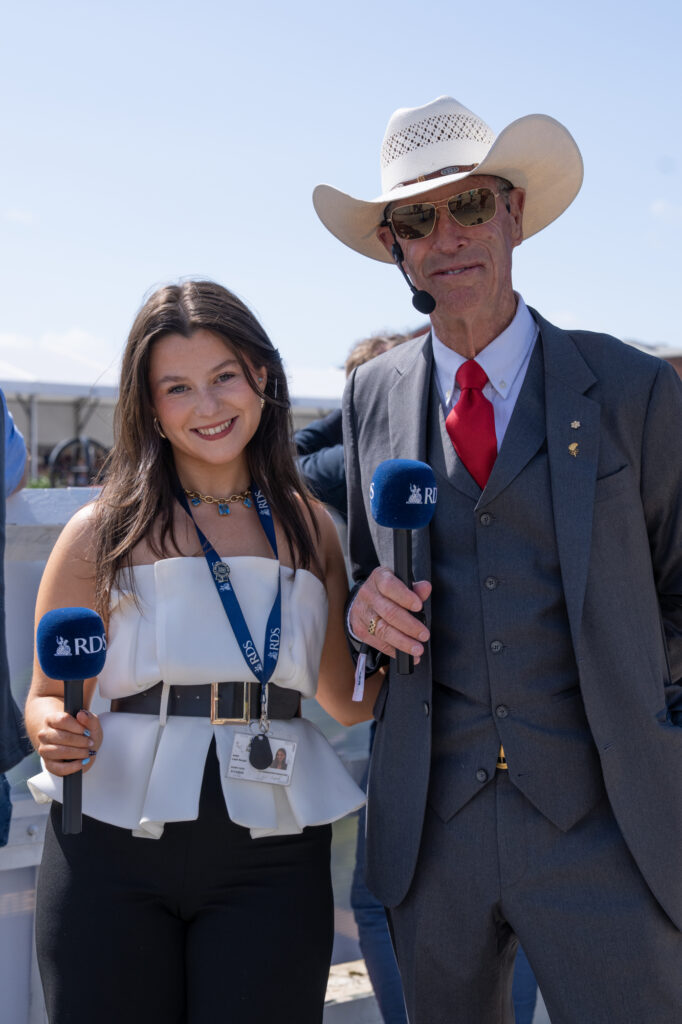
One of the week’s most celebrated arrivals was Ian Millar, the Canadian legend affectionately known as “Captain Canada.” With an Olympic career spanning over four decades and a record-breaking ten Olympic appearances, Millar’s presence in Dublin was a reminder of the longevity and dedication required to remain at the sport’s elite level. His influence extends beyond his own riding career, he has mentored generations of Canadian riders, many of whom have themselves become international champions. For younger fans and aspiring riders, seeing him in action at the RDS was both a history lesson and a masterclass in professionalism.
The international flavour of this year’s show was further enriched by the return of Rodrigo Pessoa, one of the most accomplished riders in modern showjumping. The Brazilian Olympic gold medallist, former world champion, and ex–Irish Chef d’Équipe made a triumphant return to Irish soil, delivering strong performances throughout the week and securing a place on the podium in the Grand Prix. His competitive edge and trademark precision reminded the Dublin crowd why he has been at the top of the sport for so long and why his connection to Ireland remains special
Princess Anne’s visit to the 150th Dublin Horse Show brought a unique blend of prestige and warmth to the event. As a respected figure in the equestrian world and president of the British Olympic Association, her presence resonated deeply with participants and spectators alike. Throughout the day, she engaged personally with riders and officials, highlighting the show’s rich heritage and its growing international stature. Her visit not only honored the show’s 150-year legacy but also emphasized the enduring connection between tradition and the evolving future of equestrian sport in Ireland.
⸻
The People Who Make the Show
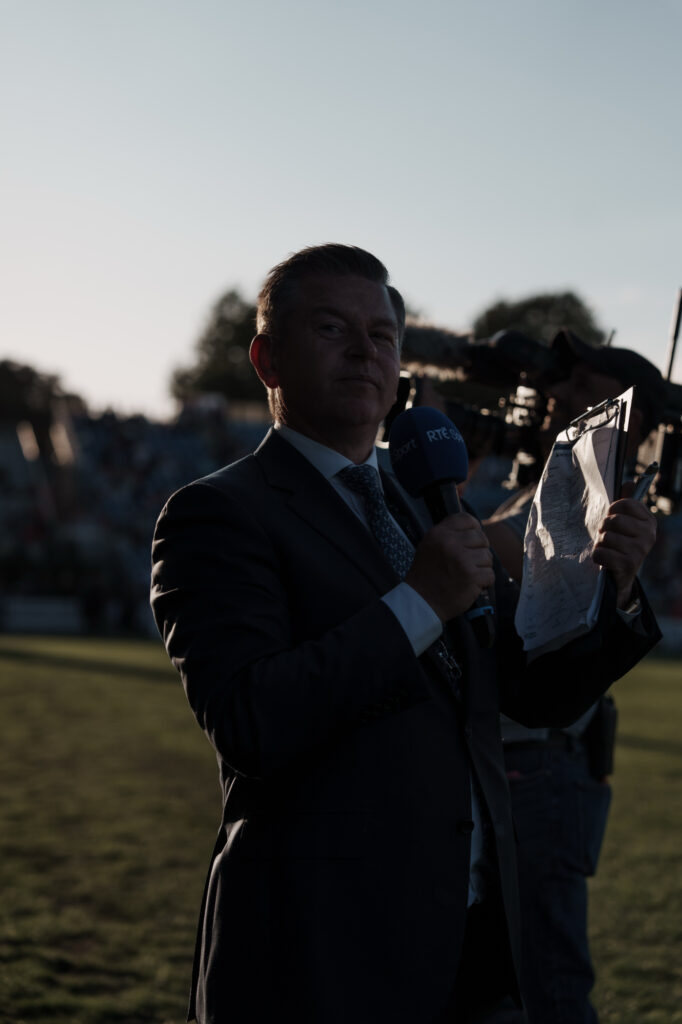
Every great sporting event has its stars behind the scenes, and Dublin is no exception.
There was Brendan McArdle of The Irish Field, whose energetic commentary not only kept spectators informed but also orchestrated an increasingly famous Mexican wave in the main arena stands, proving that equestrian sport can be as lively and crowd-driven as any stadium event.
Behind the scenes at the Dublin Horse Show are key figures like Thom Kerssies, affectionately known as “Thomputer.” As part of Equipe, the leading provider of equestrian timing, scoring, and results management software used at top international events including the Olympics, Thom ensures every jump, every second, and every score is recorded with impeccable accuracy. His expertise keeps the competition running smoothly and transparently, critical to the integrity of the sport.
Phil Simpson, from D2i Systems, has revolutionized the event entry process by enabling online registrations instead of paper forms. This innovation not only streamlines administration but also reduces environmental impact- a step forward in making equestrian sport more sustainable. Both Thom and Phil exemplify the essential, often unseen technology and systems that underpin the show’s seamless operation.
And then there’s Christy, a long-time member of the RDS ground staff, who spent the week zipping through the showgrounds in his trusty buggy delivering water to riders, grooms, and officials. In a week of elite sport, Christy became a quiet hero, his work as essential as the perfect course build or the split-second decisions in the ring. It’s these human touches that remind us the Dublin Horse Show is as much about community as it is about competition.
⸻
Tradition Meets Progress
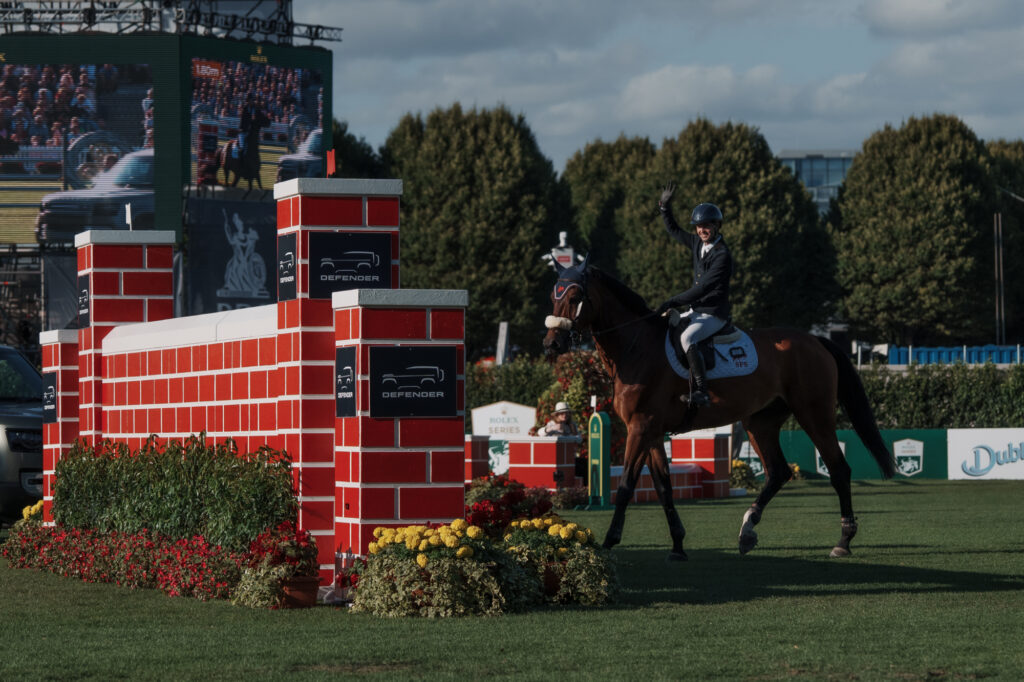
Equestrian sport is one of the few where men and women compete on equal terms, but that doesn’t mean the playing field is always perceived as level. Wins like Proudley’s and Kraut’s matter, not because they prove that women can compete at the top, but because they underline that women are winning at the top, shaping the sport’s biggest results across generations.
The Dublin Horse Show thrives on tradition, the pageantry, the rituals, the familiar faces, but 2025 proved that progress and tradition can coexist. The key is ensuring that the traditions worth keeping are inclusive, competitive, and reflective of the sport’s best values.
⸻
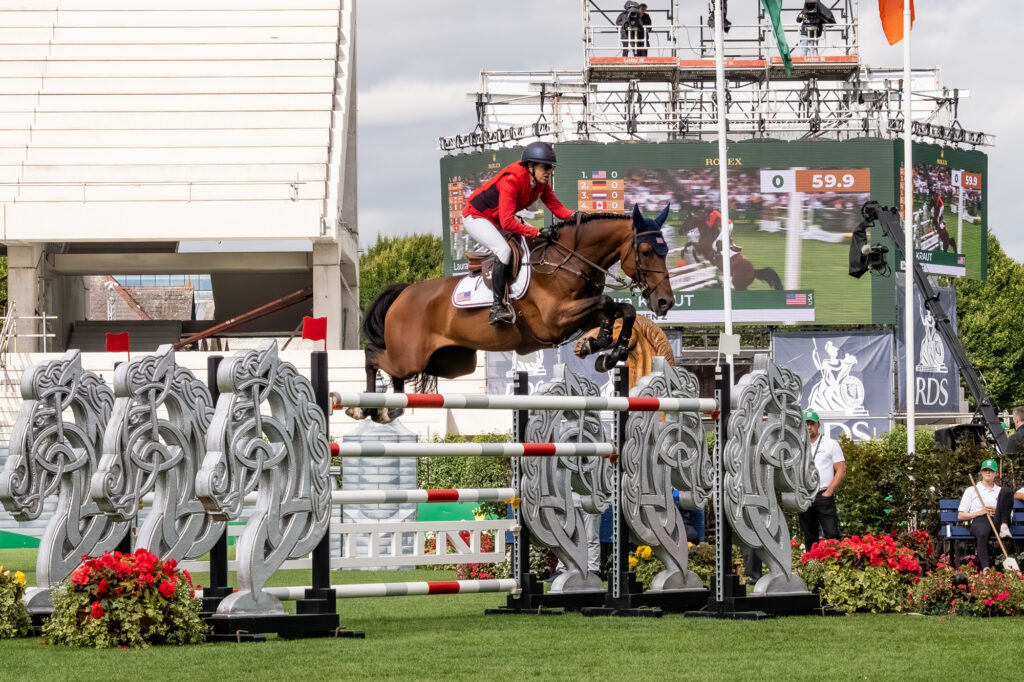
Closing the Gates, Opening a New Chapter
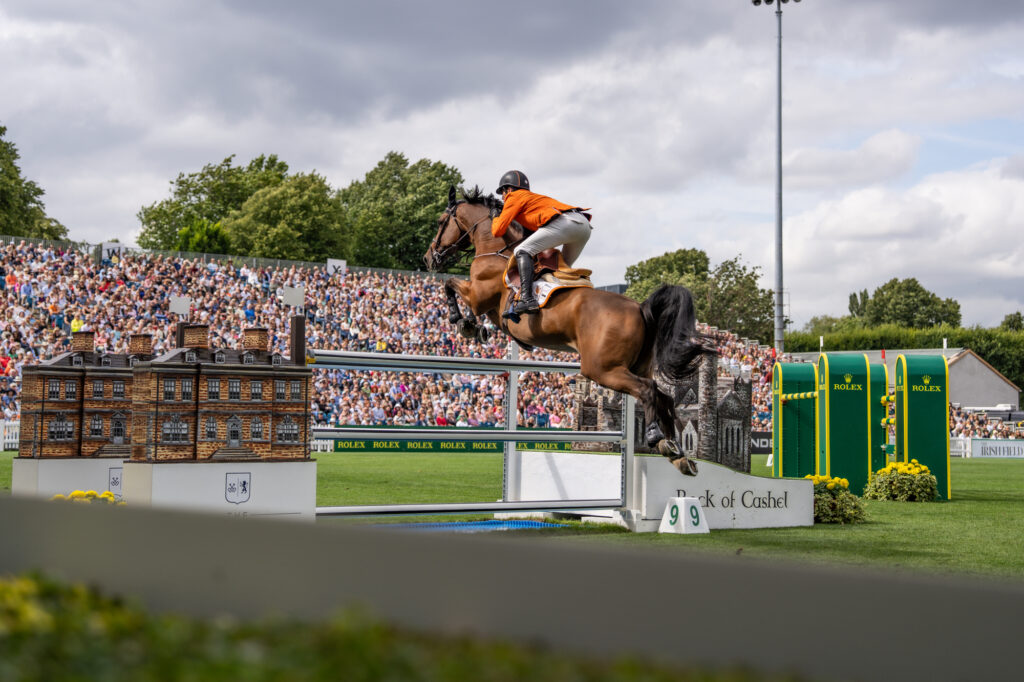
As the crowds drifted away and the arena crews began dismantling the fences, there was that bittersweet mix of nostalgia and satisfaction that comes when an iconic event draws to a close.
The 150th Dublin Horse Show was more than just another year in the calendar; it was a statement of where the sport stands and where it is going. In a week where history was honoured, barriers were broken, and both riders and behind-the-scenes heroes played their part, the message was clear: the sport’s future will be written by those willing to rise to the occasion and leave a mark that lasts long after the arena falls silent.

